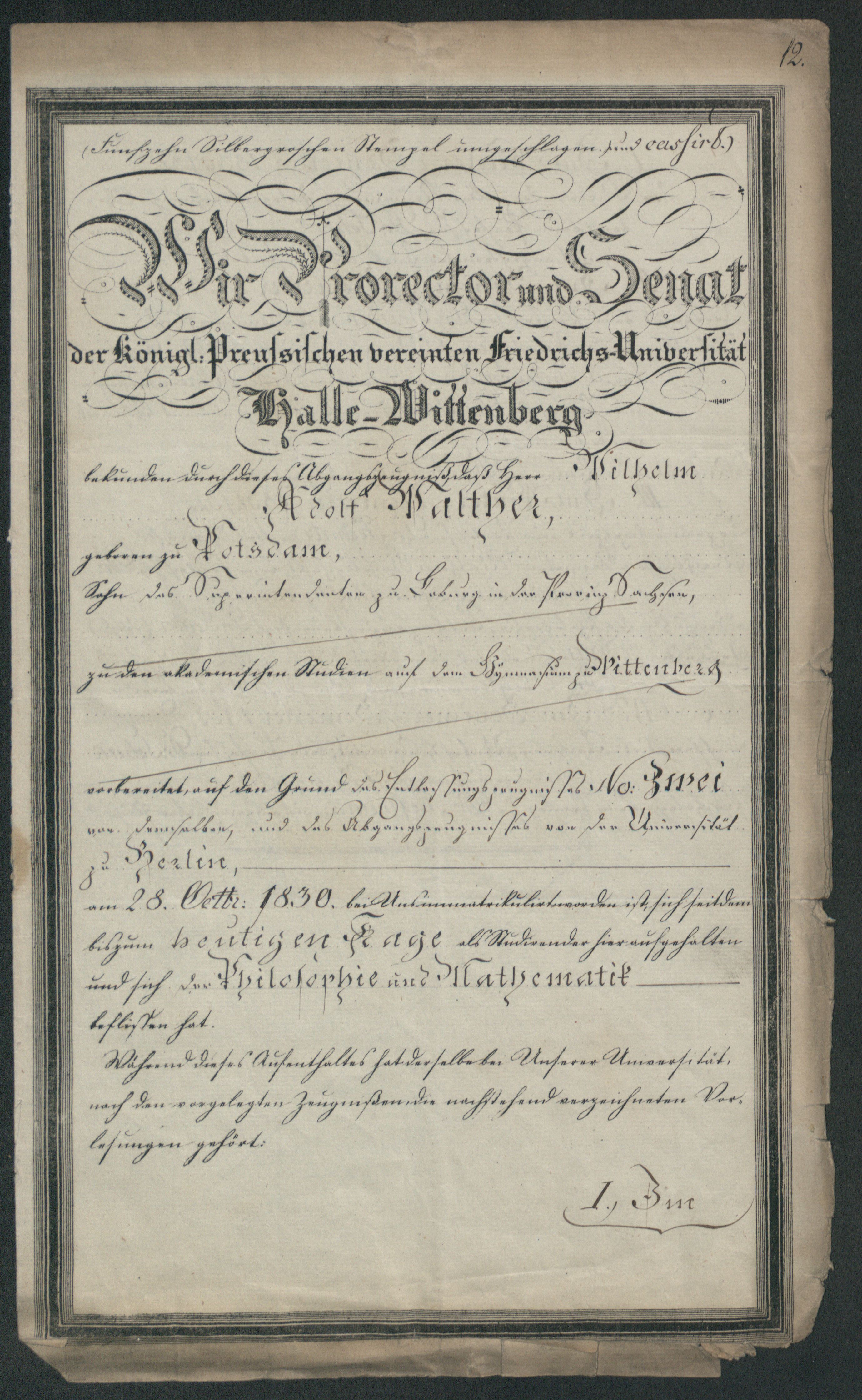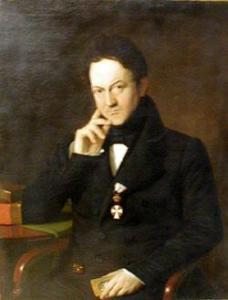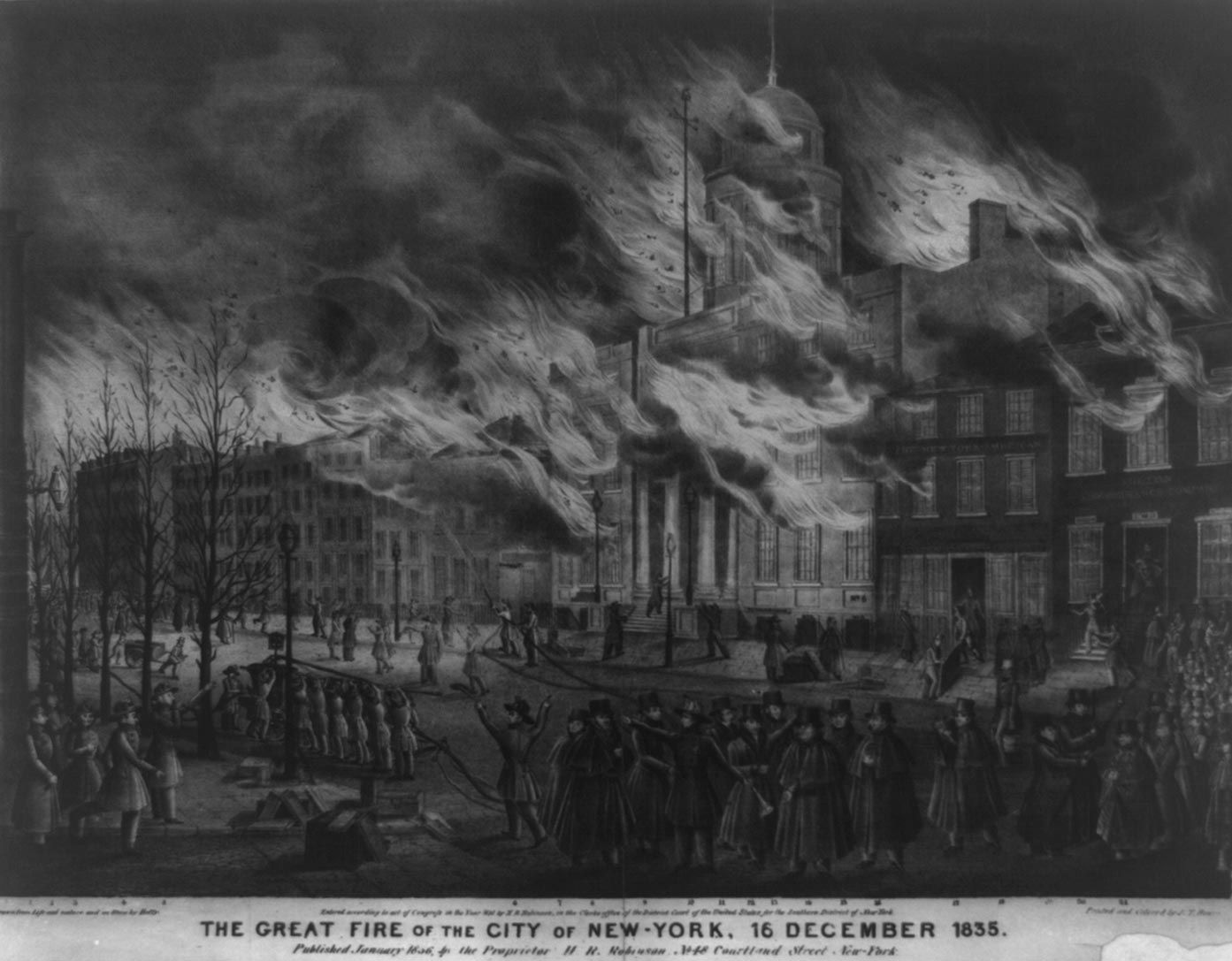|
Karl Gottfried Erdmann
Karl Gottfried Erdmann (31 March 1774 – 13 January 1835) was a German physician and botanist. He was the father of chemist Otto Linné Erdmann (1804–1869). Erdmann was born in Wittenberg. In 1798 he received his medical doctorate from the University of Wittenberg with the dissertation "''De nexu theoriam et praxin medicam intercedente''". In 1799 he became a licensed physician in Dresden, and up until 1824 he held the position of sanitation assessor. He is credited for introducing smallpox vaccine, vaccinations for smallpox in Dresden in 1801.Medicinisches Schriftsteller-Lexicon der jetzt lebenden Aerzte ..., Volume 6 by Adolph Carl Peter Callisen He died in Dresden, aged 60. Selected works * ''Sammlun ...[...More Info...] [...Related Items...] OR: [Wikipedia] [Google] [Baidu] |
Botanist
Botany, also called plant science, is the branch of natural science and biology studying plants, especially Plant anatomy, their anatomy, Plant taxonomy, taxonomy, and Plant ecology, ecology. A botanist or plant scientist is a scientist who specialises in this field. "Plant" and "botany" may be defined more narrowly to include only land plants and their study, which is also known as phytology. Phytologists or botanists (in the strict sense) study approximately 410,000 species of Embryophyte, land plants, including some 391,000 species of vascular plants (of which approximately 369,000 are flowering plants) and approximately 20,000 bryophytes. Botany originated as history of herbalism#Prehistory, prehistoric herbalism to identify and later cultivate plants that were edible, poisonous, and medicinal, making it one of the first endeavours of human investigation. Medieval physic gardens, often attached to Monastery, monasteries, contained plants possibly having medicinal benefit. ... [...More Info...] [...Related Items...] OR: [Wikipedia] [Google] [Baidu] |
Otto Linné Erdmann
Otto Linné Erdmann (11 April 1804 – 9 October 1869) was a German chemist. He was the son of Karl Gottfried Erdmann Karl Gottfried Erdmann (31 March 1774 – 13 January 1835) was a German physician and botanist. He was the father of chemist Otto Linné Erdmann (1804–1869). Erdmann was born in Wittenberg. In 1798 he received his medical doctorate from the ..., the physician who introduced vaccination into Saxony. He was born in Dresden on 11 April 1804. In 1820 he began to attend the medico-chirurgical academy of his native place, and in 1822 he entered the University of Leipzig, where in 1827 he became an associate professor, and in 1830 a full professor of chemistry. This office he held until his death, which happened at Leipzig on 9 October 1869. He was particularly successful as a teacher, and the laboratory established at Leipzig under his direction in 1843 was long regarded as a model institution. As an investigator he is best known for his work on nickel and ... [...More Info...] [...Related Items...] OR: [Wikipedia] [Google] [Baidu] |
Wittenberg
Wittenberg, officially Lutherstadt Wittenberg, is the fourth-largest town in the state of Saxony-Anhalt, in the Germany, Federal Republic of Germany. It is situated on the River Elbe, north of Leipzig and south-west of the reunified German federal capital city of Berlin, and has a population of 46,008 (2018). Wittenberg has close connections with Martin Luther (1483–1546) and the 16th century religious / theological movement of Protestantism begun here in the Reformation, and the large branch of Western Christianity started here of Lutheranism, Evangelical Lutheranism, for which it received the honorific title ''Lutherstadt'' and has been called the "cradle of the Reformation" and "cradle of Protestantism". Several of Wittenberg's buildings are associated with the historical / religious events, including a preserved part of the Augustinians, Augustinian monastery of the local community of the world-wide Catholic Church, Roman Catholic Order of St. Augustine in which Luth ... [...More Info...] [...Related Items...] OR: [Wikipedia] [Google] [Baidu] |
University Of Wittenberg
Martin Luther University Halle-Wittenberg (), also referred to as MLU, is a public research university in the cities of Halle and Wittenberg. It is the largest and oldest university in the German state of Saxony-Anhalt. MLU offers German and international (English) courses leading to academic degrees such as BA, BSc, MA, MSc, doctoral degrees, and habilitation. The university was created in 1817 through the merger of the University of Wittenberg (founded in 1502) and the University of Halle (founded in 1694). MLU is named after Protestant reformer Martin Luther, who was a professor in Wittenberg. Today, the university campus is located in Halle, while ''Leucorea Foundation'' in Wittenberg serves as MLU's convention centre. History University of Wittenberg (''Universität Wittenberg'') was founded in 1502 by Frederick the Wise, Elector of Saxony to propagate the principles of Renaissance humanism. The foundation of the university was heavily criticized, especially wh ... [...More Info...] [...Related Items...] OR: [Wikipedia] [Google] [Baidu] |
Smallpox Vaccine
The smallpox vaccine is used to prevent smallpox infection caused by the variola virus. It is the first vaccine to have been developed against a contagious disease. In 1796, British physician Edward Jenner demonstrated that an infection with the relatively mild cowpox virus conferred immunity against the deadly smallpox virus. Cowpox served as a natural vaccine until the modern smallpox vaccine emerged in the 20th century. From 1958 to 1977, the World Health Organization (WHO) conducted a global vaccination campaign that eradicated smallpox, making it the only human disease to be eradicated. Although routine smallpox vaccination is no longer performed on the general public, the vaccine is still being produced for research, and to guard against bioterrorism, biological warfare, and mpox.Anderson MG, Frenkel LD, Homann S, and Guffey J. (2003), "A case of severe monkeypox virus disease in an American child: emerging infections and changing professional values"; ''Pediatr Infect Dis ... [...More Info...] [...Related Items...] OR: [Wikipedia] [Google] [Baidu] |
Adolph Carl Peter Callisen
Adolph Carl Peter Callisen (8 April 1786 in Glückstadt – 7 March 1866 in Wandsbek) was a German-Danish physician and lexicographer. He studied medicine at the universities of Kiel and Copenhagen, receiving his doctorate in 1809. In 1816 he was named an associate professor at the Royal Danish Academy of Surgery in Copenhagen, where in 1829 he attained a full professorship. In 1842 he became a professor at the University of Copenhagen because of a merger with the surgical academy. From 1830 to 1845 he published a 33 volume lexicon A lexicon (plural: lexicons, rarely lexica) is the vocabulary of a language or branch of knowledge (such as nautical or medical). In linguistics, a lexicon is a language's inventory of lexemes. The word ''lexicon'' derives from Greek word () ... of medical professionals, titled ''Medicinisches Schriftsteller-Lexicon der jetzt lebenden Aerzte, Wundärzte, Geburtshelfer, Apotheker und Naturforscher aller gebildeten Völker'' ("Medical writer ... [...More Info...] [...Related Items...] OR: [Wikipedia] [Google] [Baidu] |
Dresden
Dresden (; ; Upper Saxon German, Upper Saxon: ''Dräsdn''; , ) is the capital city of the States of Germany, German state of Saxony and its second most populous city after Leipzig. It is the List of cities in Germany by population, 12th most populous city of Germany, the fourth largest by area (after Berlin, Hamburg, and Cologne), and the third-most populous city in the area of former East Germany, after Berlin and Leipzig. Dresden's urban area comprises the towns of Freital, Pirna, Radebeul, Meissen, Coswig, Saxony, Coswig, Radeberg, and Heidenau and has around 790,000 inhabitants. The Dresden metropolitan area has approximately 1.34 million inhabitants. Dresden is the second largest city on the River Elbe after Hamburg. Most of the city's population lives in the Dresden Basin, Elbe Valley, but a large, albeit very sparsely populated, area of the city east of the Elbe lies in the West Lusatian Hill Country and Uplands (the westernmost part of the Sudetes) and thus in Lusatia. ... [...More Info...] [...Related Items...] OR: [Wikipedia] [Google] [Baidu] |
Exsiccata
Exsiccata (Latin, ''gen.'' -ae, ''plur.'' -ae) is a work with "published, uniform, numbered set[s] of preserved specimens distributed with printed labels". Typically, exsiccatae are numbered collections of dried herbarium Biological specimen, specimens or preserved biological sample (material), samples published in several duplicate sets with a common theme or title, such as ''Lichenes Helvetici exsiccati'' (see figure). Exsiccatae are regarded as scientific contributions of the editor(s) with characteristics from the library world (published booklets of scientific literature, with authors/ editing, editors, titles, often published in Serial (publishing), serial publications like journals and magazines and in Serial_(literature), serial formats with fascicles) and features from the herbarium world (uniform and numbered collections of duplicate herbarium specimens). Exsiccatae works represent a special method of scholarly communication. The text in the printed matters/published book ... [...More Info...] [...Related Items...] OR: [Wikipedia] [Google] [Baidu] |
Upper Saxony
Upper Saxony ({{langx, de, Obersachsen) was the name given to the majority of the German lands held by the House of Wettin, in what is now called Central Germany (''Mitteldeutschland''). Conceptual history The name derives from the period when, after the fall of Duke Henry the Lion in 1180, the medieval Duchy of Saxony dissolved and the Duchy of Saxe-Wittenberg lands passed to the House of Ascania and later to the Wettins in the Margraviate of Meissen. These dynasties subdued the areas east of the Saale river inhabited by Polabian Slavs, and took the tribal name ''Sachsen'' ( Saxons) upstream the Elbe with them. It was particularly to distinguish the lands from 'Lower Saxony', a concept which arose later in popular usage (though never enforced) as a term for the original Saxon lands in north and west Germany (where Low German dialects had spread), in what is now the state of Lower Saxony, as well as the adjacent Westphalian region, Holstein and the western part of today' ... [...More Info...] [...Related Items...] OR: [Wikipedia] [Google] [Baidu] |
1774 Births
Events January–March * January 21 – Mustafa III, Sultan of the Ottoman Empire, dies and is succeeded by his brother Abdul Hamid I. * January 27 ** An angry crowd in Boston, Massachusetts seizes, tars, and feathers British customs collector and Loyalist John Malcolm, for striking a boy and a shoemaker, George Hewes, with his cane. ** British industrialist John Wilkinson patents a method for boring cannon from the solid, subsequently utilised for accurate boring of steam engine cylinders. * February 3 – The Privy Council of Great Britain, as advisors to King George III, votes for the King's abolition of free land grants of North American lands. Henceforward, land is to be sold at auction to the highest bidder. * February 6 – The Parlement of Paris votes a sentence of civil degradation, depriving Pierre Beaumarchais of all rights and duties of citizenship. * February 7 – The volunteer fire company of Trenton, New Jersey, predecessor to the paid Trenton Fi ... [...More Info...] [...Related Items...] OR: [Wikipedia] [Google] [Baidu] |
1835 Deaths
Events January–March * January 7 – anchors off the Chonos Archipelago on her second voyage, with Charles Darwin on board as naturalist. * January 8 – The United States public debt contracts to zero, for the only time in history. * January 24 – Malê Revolt: African slaves of Yoruba Muslim origin revolt against Brazilian owners at Salvador, Bahia. * January 26 ** Queen Maria II of Portugal marries Auguste de Beauharnais, 2nd Duke of Leuchtenberg, in Lisbon; he dies only two months later. ** Saint Paul's in Macau is largely destroyed by fire after a typhoon hits. * January 30 – The first assassination attempt against a President of the United States is carried out against U.S. President Andrew Jackson at the United States Capitol * February 1 – Slavery is abolished in Mauritius. * February 20 – 1835 Concepción earthquake: Concepción, Chile, is destroyed by an earthquake. The resulting tsunami destroys the neighboring city of Talcahuano. * March 2 – ... [...More Info...] [...Related Items...] OR: [Wikipedia] [Google] [Baidu] |
Scientists From Wittenberg
A scientist is a person who researches to advance knowledge in an area of the natural sciences. In classical antiquity, there was no real ancient analog of a modern scientist. Instead, philosophers engaged in the philosophical study of nature called natural philosophy, a precursor of natural science. Though Thales ( 624–545 BC) was arguably the first scientist for describing how cosmic events may be seen as natural, not necessarily caused by gods,Frank N. Magill''The Ancient World: Dictionary of World Biography'', Volume 1 Routledge, 2003 it was not until the 19th century that the term ''scientist'' came into regular use after it was coined by the theologian, philosopher, and historian of science William Whewell in 1833. History The roles of "scientists", and their predecessors before the emergence of modern scientific disciplines, have evolved considerably over time. Scientists of different eras (and before them, natural philosophers, mathematicians, natur ... [...More Info...] [...Related Items...] OR: [Wikipedia] [Google] [Baidu] |








